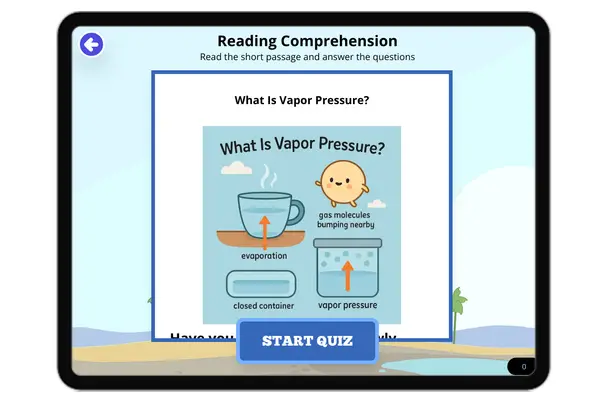How Many Valence Electrons Does Chlorine Have? — Reading Comprehension
Premium Resource
Grades
- 5
- 6
- 7
- 8
Standards
- MS-PS1-2
- MS-PS1-4
PRINT+DIGITAL RESOURCE
This learning resource is available in interactive and printable formats. The interactive worksheet can be played online and assigned to students. The Printable PDF version can be downloaded and printed for completion by hand.
About This Reader
This NGSS-aligned science reading passage explains how many valence electrons chlorine has and why that makes it such a reactive element. Chlorine has 17 total electrons, with 7 in its outermost shell, making it one electron short of a full shell. The passage discusses the octet rule, chemical bonding, and how chlorine combines with other elements like sodium to form compounds such as salt (NaCl). This passage supports NGSS standard MS-PS1-1 by helping students understand atomic structure, periodic table grouping, and the role of electrons in chemical behavior. Multiple-choice questions reinforce key vocabulary, science reasoning, and reading comprehension, making it ideal for middle school learners.
Perfect For:
👩🏫 Teachers
- • Reading comprehension practice
- • Auto-graded assessments
- • Literacy skill development
👨👩👧👦 Parents
- • Reading practice at home
- • Comprehension improvement
- • Educational reading time
🏠 Homeschoolers
- • Reading curriculum support
- • Independent reading practice
- • Progress monitoring
Reading Features:
📖
Reading Passage
Engaging fiction or nonfiction text
❓
Comprehension Quiz
Auto-graded questions
📊
Instant Feedback
Immediate results and scoring
📄
Printable Version
Download for offline reading













